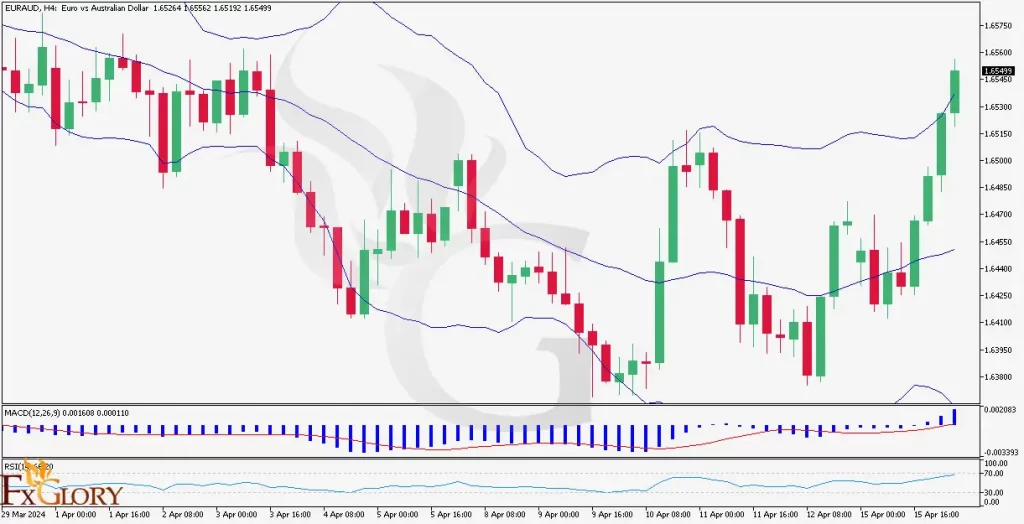Time Zone: GMT +2
Time Frame: 4 Hours (H4)
Fundamental Analysis:
The EUR/AUD pair represents the currency exchange rate between the Eurozone and Australia. This pairing is largely influenced by contrasting economic health indicators and policy decisions made by the European Central Bank (ECB) and the Reserve Bank of Australia (RBA). The Euro is influenced by factors such as EU economic stability, monetary policy adjustments, and political events within member countries. Meanwhile, the Australian dollar is often swayed by commodity export prices, especially iron ore and coal, and shifts in global risk appetite. The Euro has been under scrutiny due to economic indicators suggesting a slowdown in some Eurozone economies, and the ECB’s monetary policy stance will be key in determining its short- to medium-term strength. On the flip side, Australia’s reliance on commodity exports to China makes it sensitive to changes in the Chinese economy and trade relations. In recent times, the Australian economy has shown resilience, but any changes in trade dynamics or commodity prices could quickly reflect on the AUD’s strength. Traders should pay attention to the upcoming economic reports and policy announcements from both regions, as these will likely affect the EUR/AUD’s movement.
Price Action:
On the H4 chart, the EUR/AUD has demonstrated a bullish trend, with the latest candles forming a series of higher highs and higher lows. The price is pushing against the upper Bollinger Band, suggesting an expansion in volatility and possible continuation of the bullish momentum. However, caution is warranted as the price nears the upper band, which could act as a resistance level.
Key Technical Indicators:
MACD: The MACD lines are above the zero line and have diverged, demonstrating strong bullish momentum as the market continues to push higher.
RSI: The Relative Strength Index (RSI) is above the 60 mark, which points to ongoing buying interest, but still below the overbought threshold of 70. This suggests there is room for further upward price movement before the market becomes overextended.
Bollinger Bands: The EUR/AUD price is currently trading near the upper Bollinger Band. If the price sustains above this level, it may signal the continuation of the bullish trend. A retreat from the band could mean a temporary pullback before the trend resumes.
Support and Resistance:
Support: Support levels for EUR/AUD are presently situated at the lower Bollinger Band, which also aligns with the previous swing lows. This could serve as a cushion for any retracements.
Resistance: On the resistance side, the upper Bollinger Band is the immediate hurdle, and a sustained break above this level could signal further bullish potential. The mid-band of the Bollinger Bands may act as a secondary level of support in case of a pullback.
Conclusion and Consideration:
While the EUR/AUD pair shows bullish signs on the technical front, it’s important to factor in the fundamental elements that may influence price action. Traders should consider both sets of analysis when planning their trades, with a close eye on the identified support and resistance levels for potential entries and exits. Monitoring key economic indicators and policy decisions will be crucial in the coming days.
Disclaimer: This analysis is for informational purposes only and does not constitute investment advice. Traders should conduct their own research and analysis before making any trading decisions.






